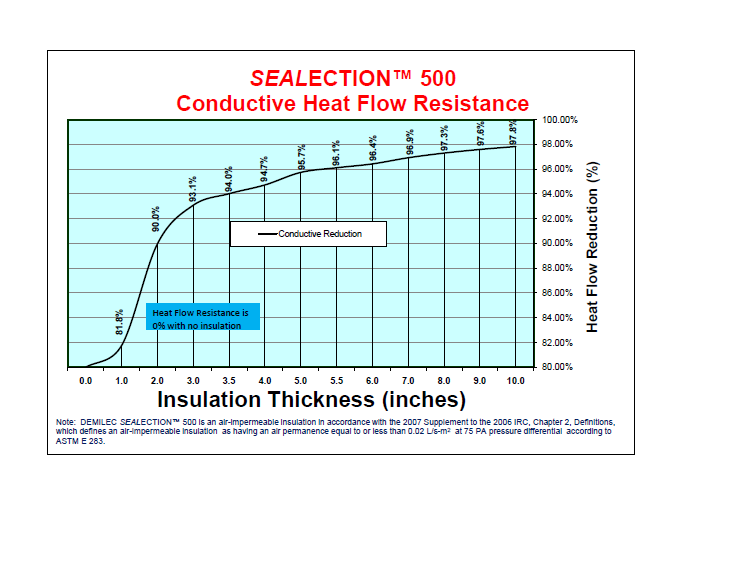Insulation Kansas City: The Truth Behind R-Values
Insulating Your Kansas City Home
Insulation in your home is meant to stop the movement of heat. The more effective your insulation is at reducing heat flow, the lower you can expect your heating and cooling costs to be. You will often hear insulation efficacy discussed in terms of R-value, which is a measure of thermal resistance used in the building and construction industry. R-value is the reciprocal of U-factor. According to this concept, the higher the R-value is, the better the building insulation’s effectiveness.
This gets confusing because the concept might lead you to believe that more insulation is the best solution, when in fact there is a diminishing return on investment for increasing R-values. Remember, R-value only measures one of the factors that dictates how home insulation will perform. Heat moves in and out of buildings in four ways: by conduction, convection, radiation and air infiltration. R-value is only related to conduction and does not address these other forms of movement.
According to an article in EDC magazine, “R-values have become to the building owner what MPGs have become to the car owner: A largely understood metric that perpetuates a skewed understanding of energy economy. Mike Allen made this observation with MPGs a few years ago (October 2009) in Popular Mechanics, and he suggested that the car industry use ‘gallons per mile,’ the reciprocal of MPGs (miles per gallon). Allen recognized that differences in MPG ratings do not reflect the actual differences in fuel consumption the way that differences in gallons per mile ratings would. The same is true for R-values as compared to U-values. However, the U-value is not as intuitive as the R-value. We understand that greater R-value correlates to better insulation. Conversely, a U-value of U-0.050 (that is, R-20) is difficult to put in perspective.”
The effectiveness of an insulation material’s resistance to heat flow also depends on how and where it is installed. The U.S. Department of Energy notes that insulation that is compressed will not provide its full rated R-value. Similarly, the R-value of a wall or ceiling may vary from the R-value of the insulation because of placement near studs, joists and other materials that create gaps for heat flow. Spray foam insulation fills these cavities to stop airflow and related heat loss.
When considering the best insulation for your application, it’s also important to consider airflow as a result of tiny cracks and gaps throughout the structure. While these may seem insignificant, the impact of the allowed airflow affects your home’s overall efficiency. This is another benefit of choosing spray foam insulation, as it has the capacity to fill in those nooks and crannies to stop air movement.
Radiation and convection are other important factors to keep in mind when thinking about thermal insulation and a building system’s heat flow. Since radiation varies with absolute temperature and convection varies with the size of the temperature difference, specimen orientation and air permeability, the R-value may be valid for test conditions, but not necessarily an accurate predictor of performance in real world applications.
This video below does a great job illustrating how air movement wastes energy and money. It also shows how adding more R-value by adding additional insulation won’t return proportionate savings. Spray foam insulation is the way to effectively stop air leakage.
How KC Spray Foam Can Meet Your Insulation Kansas City Needs
At KC Spray Foam we use the best products in the industry to protect your investment. We use Sealection500 open cell spray foam to reduce heat flow. The chart below illustrates its conductive heat flow resistance.

Proper installation is key to performance. When insulation is not installed properly, or is installed in a poorly designed enclosure system, the performance can be compromised. As important as it is to choose the right product for your application, it’s equally important to choose professional installers to ensure the integrity of your systems are maintained to enhance the overall energy performance of your home.
If you want to learn more about how our spray foam insulation products can benefit your home’s efficiency, call us today!
About the author
Mark grew up in Winterset, Iowa: the birthplace of John Wayne and the home of Madison County Covered Bridges. He lived on a small acreage where they raised cattle, sheep, and chickens. During his youth, he raised and showed cattle with the local 4H program.
Mark’s first paying job was working at the local lumberyard after school and on weekends. After he graduated from Winterset High School he pursued the agricultural field by working on a large farming operation eventually working his way up to the manger position and partner. He also had a long career in the transportation industry.
Mark continues to own and oversee the operations of Iowa Spray Foam in addition to KC Spray Foam & Coatings.
Mark resides in Lee’s Summit, MO with his wife Tina and three of their four children. Their oldest lives and works in the Kansas City area as well.